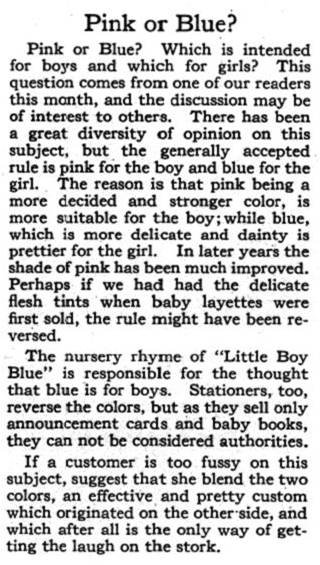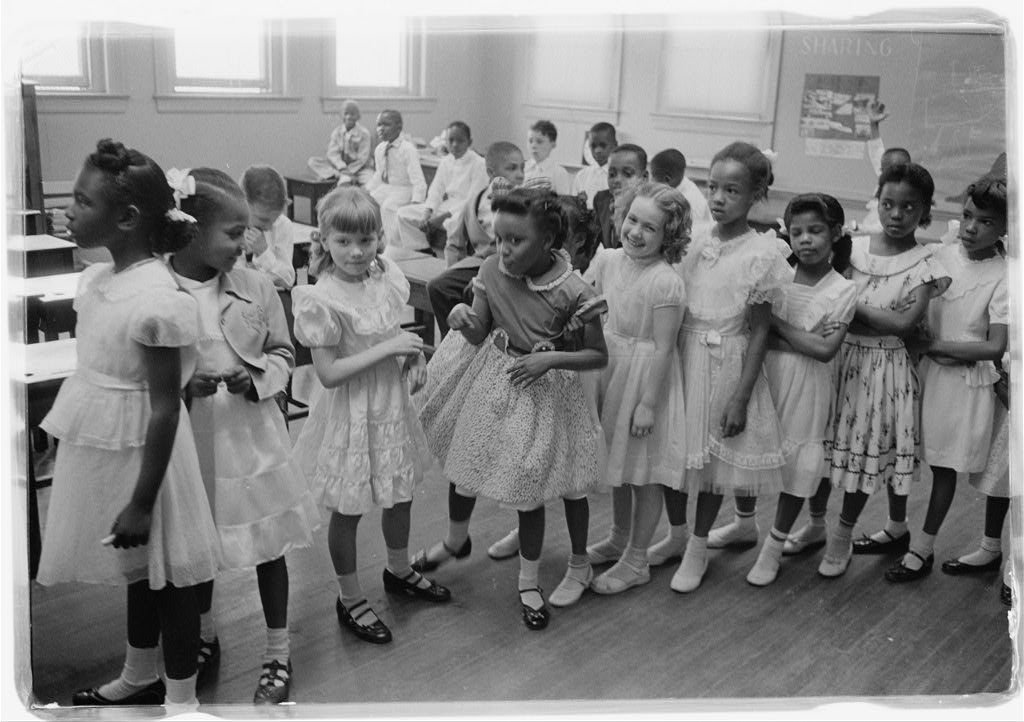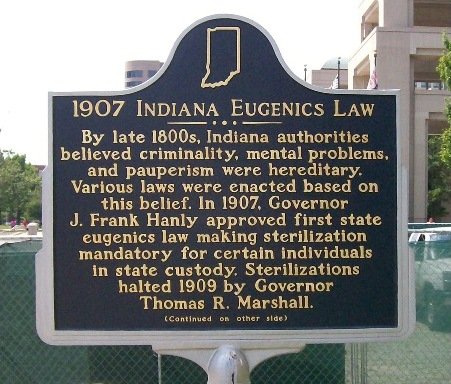Giving Context:
Setting the Stage for Colin In Black & White
Giving Context:
Setting the Stage for
Colin In Black & White
The concepts of race in American society and sports, particularly the NFL, are analyzed throughout Colin In Black & White. This learning companion grounds these concepts in the theoretical and historical contexts from which they were born.
In this section, learners will explore how race and identity are socially constructed.
They will then extend this learning by digging into the roots and historical impact of eugenics and scientific racism.
Watch and Reflect:
View this scene from Colin in Black and White before continuing on this page.
The concepts of race in American society and sports, particularly the NFL, are analyzed throughout Colin In Black & White. This learning companion grounds these concepts in the theoretical and historical contexts from which they were born.
In this section, learners will explore how race and identity are socially constructed.
They will then extend this learning by digging into the roots and historical impact of eugenics and scientific racism.
Watch and Reflect:
View this scene from Colin in Black and White before continuing on this page.
Social Constructivism
Social constructivism is a social science theory that says people create or construct meaning based on their interactions and collaboration. Social scientists like Vygotsky and Piaget applied these theories to cognitive psychology and cognitive learning. However, by the mid-twentieth century, theorists across the social sciences began to apply social constructivism to other walks of life.
Let’s begin by examining identity and race.
Socially Constructed Identities
In present-day society, gender is widely accepted as a “socially constructed” space. People have constructed the concept of gender over time in ways that privilege “patriarchal power.” Academics in various fields joined in the quest to prove there are natural differences between men and women. While the proof they presented was credible to many at the time, it may seem inaccurate to learners today.
For example, the theory of gender essentialism, according to Elizabeth Boskey, Ph.D., “is the widely discredited and outdated idea that men and women act differently and have different options in life because of intrinsic or essential differences between the sexes. In other words, it is the idea that men and women are fundamentally different for reasons that are unchangeable.”
Socially Constructed Identities
 Image Courtesy of Colin In Black & White
Image Courtesy of Colin In Black & WhiteIn present-day society, gender is widely accepted as a “socially constructed” space. People have constructed the concept of gender over time in ways that privilege “patriarchal power.” Academics in various fields joined in the quest to prove there are natural differences between men and women. While the proof they presented was credible to many at the time, it may seem inaccurate to learners today.
For example, the theory of gender essentialism, according to Elizabeth Boskey, Ph.D., “is the widely discredited and outdated idea that men and women act differently and have different options in life because of intrinsic or essential differences between the sexes. In other words, it is the idea that men and women are fundamentally different for reasons that are unchangeable.”
Socially Constructed Identities
In present-day society, gender is widely accepted as a “socially constructed” space. People have constructed the concept of gender over time in ways that privilege “patriarchal power.” Academics in various fields joined in the quest to prove there are natural differences between men and women. While the proof they presented was credible to many at the time, it may seem inaccurate to learners today.
For example, the theory of gender essentialism, according to Elizabeth Boskey, Ph.D., “is the widely discredited and outdated idea that men and women act differently and have different options in life because of intrinsic or essential differences between the sexes. In other words, it is the idea that men and women are fundamentally different for reasons that are unchangeable.”

In the late 1800s and early 1900s, craniometrists–scientists who measured skulls–claimed that men were more intelligent than women because men had larger brains. Doctors and other decision-makers, like politicians, also used women’s menstrual cycles to prove they were irrational. Because of this, they asserted women couldn’t be trusted to vote, pursue higher education or serve in leadership positions.
Current day thought leaders like Brenda J. Allen and others in the fields of sociology and psychology have questioned such theories. They challenged arguments that women and people of color were less evolved than white adult males.
Because of the complex history of gender, biological sex is often confused with performed gender.
Sex refers to biological genitalia. Gender refers to an identity based on internalized cultural notions of masculinity and femininity that have been constructed through communication, interaction and meaning-making.
For example, society has constructed the notion that boys and girls prefer certain colors and activities. But did you know that there was a time in the United States when pink was for boys and blue for girls?
According to Smithsonian Magazine, “Every generation brings a new definition of masculinity and femininity that manifests itself in children’s dress.”
Hover over the newspaper clipping to read more about the history of pink and blue. Can you think of other things we take for granted that could be socially constructed?
In the late 1800s and early 1900s, craniometrists–scientists who measured skulls–claimed that men were more intelligent than women because men had larger brains. Doctors and other decision-makers, like politicians, also used women’s menstrual cycles to prove they were irrational. Because of this, they asserted women couldn’t be trusted to vote, pursue higher education or serve in leadership positions.
Current day thought leaders like Brenda J. Allen and others in the fields of sociology and psychology have questioned such theories. They challenged arguments that women and people of color were less evolved than white adult males.
Because of the complex history of gender, biological sex is often confused with performed gender.
Sex refers to biological genitalia. Gender refers to an identity based on internalized cultural notions of masculinity and femininity that have been constructed through communication, interaction and meaning-making.
For example, society has constructed the notion that boys and girls prefer certain colors and activities. But did you know that there was a time in the United States when pink was for boys and blue for girls?
According to Smithsonian Magazine, “Every generation brings a new definition of masculinity and femininity that manifests itself in children’s dress.”
Hover over the newspaper clipping to read more about the history of pink and blue. Can you think of other things we take for granted that could be socially constructed?

In Pink and Blue: Telling the Boys from the Girls, fashion historian Jo B. Paoletti uses this example from a 1918 Infants’ Department article to explain the evolution of gender specific colors for infants. As time went on, surveys and news articles suggested “a great diversity of opinion” around the idea of pink and blue. By 1927, a survey in Time Magazine showed that while major department stores in cities such as New Orleans, Chicago, Boston and Cleveland preferred pink for boys, cities like Los Angeles and Philadelphia were team ‘blue for boys.’ Customers in Manhattan were split, with those shopping at Macy’s in Manhattan preferring blue for boys and those shopping at Best’s preferring pink.
Source: Pink and blue: Telling the boys from the Girls by Jo B. Paoletti
Source: “Fashions: Baby’s Clothes,” Time, November 14, 1927.
Source: The Society Pages.org
The Binary Construction of Race
 Photo Credit: Library of Congress, Thomas J. O’Halloran
Photo Credit: Library of Congress, Thomas J. O’HalloranIntegration of Barnard Elementary School in Washington, D.C., 1955
Similar to gender, race is also a social construct. The binary construction of Blackness and whiteness are quintessential American inventions. In other words, as Pulitzer Prize-winning author Toni Morrison notes, “American means white, and everybody else has to hyphenate.”
This binary construction of “Black” and “white” became the primary racial delineation while the U.S. was still transitioning from a colony to a country. Colonists constructed identities of “Blackness” and “whiteness” as they were forming a new nation. The constructed identities aided the colonists who were forcefully shipping Africans into many countries, including the present-day United States.
During early migration, in the 1600s, European colonists chose names for themselves based on their country of origin. They referred to themselves as British, Irish, Scottish, Dutch, French and more. From the late 1600s to the 1800s, colonists began to construct a national identity to establish themselves as one homogeneous group. As Europeans in the North American colonies, they sought ways to come together as a new nation. Their efforts to create a national identity resulted in a binary construction of race: “Black” as one side of the binary and “white” as the other side.
Over time, enslaved Africans in America became “Black” and Europeans became “white.” Blackness was falsely crafted–through scientific racism–to align with low intellectual capacity, high physical endurance for labor and criminal behavior. Whiteness, on the other hand, was socially constructed to represent positive characteristics synonymous in many communities with goodness, righteousness, purity and morality.
Professor Aradhna Krishna, a scholar on this topic, asks, “How did ‘white’ become a metaphor for all things good?” In her research, Professor Krishna identifies linguistic metaphors used in everyday language that juxtapose white and black as “good and bad.” She writes, “There are ‘brighter days ahead’ after ‘dark times.’ We want to be whitelisted and not blacklisted for jobs. Black hats are the bad hackers and white hats are the good ones. White lies make stretching the truth okay, while we don’t want to receive a black mark on our records. In picture books, good people, angels and Gods dress in white, but the villains, devils and the Grim Reaper dress in black.”

Integration of Barnard Elementary School in Washington, D.C., 1955
Similar to gender, race is also a social construct. The binary construction of Blackness and whiteness are quintessential American inventions. In other words, as Pulitzer Prize-winning author Toni Morrison notes, “American means white, and everybody else has to hyphenate.”
This binary construction of “Black” and “white” became the primary racial delineation while the U.S. was still transitioning from a colony to a country. Colonists constructed identities of “Blackness” and “whiteness” as they were forming a new nation. The constructed identities aided the colonists who were forcefully shipping Africans into many countries, including the present-day United States.
During early migration, in the 1600s, European colonists chose names for themselves based on their country of origin. They referred to themselves as British, Irish, Scottish, Dutch, French and more. From the late 1600s to the 1800s, colonists began to construct a national identity to establish themselves as one homogeneous group. As Europeans in the North American colonies, they sought ways to come together as a new nation. Their efforts to create a national identity resulted in a binary construction of race: “Black” as one side of the binary and “white” as the other side.
Over time, enslaved Africans in America became “Black” and Europeans became “white.” Blackness was falsely crafted–through scientific racism–to align with low intellectual capacity, high physical endurance for labor and criminal behavior. Whiteness, on the other hand, was socially constructed to represent positive characteristics synonymous in many communities with goodness, righteousness, purity and morality.
Professor Aradhna Krishna, a scholar on this topic, asks, “How did ‘white’ become a metaphor for all things good?” In her research, Professor Krishna identifies linguistic metaphors used in everyday language that juxtapose white and black as “good and bad.” She writes, “There are ‘brighter days ahead’ after ‘dark times.’ We want to be whitelisted and not blacklisted for jobs. Black hats are the bad hackers and white hats are the good ones. White lies make stretching the truth okay, while we don’t want to receive a black mark on our records. In picture books, good people, angels and Gods dress in white, but the villains, devils and the Grim Reaper dress in black.”
Blackness became the antithesis to whiteness.
Who created the binary construction of race that “others” Black people? This construction was the process of nation-building, and the American colonists shaped the type of nation they were building with great intentionality. In order to build a “united” nation — a “United States” — the “founding fathers” had to unite the various groups of European colonists under one national identity. That identity was a socially constructed “white” identity.
Organizations such as the American Psychological Association (APA), which has been around since the late 1800’s, helped to construct such ideas. Recently in their apology to people of color for their role in perpetuating racism, the APA said that “race is a social construct with no underlying genetic or biological basis,” and they debunked the idea “that different groups can be ranked hierarchically on the basis of physical characteristics.”
Why then, even with this admission, do troubling images of Blackness persist and continue to permeate American society? The nineteenth-century “brute” has become the modern-day “thug,” and American society (white people as well as people of color) have internalized negative, socially constructed images of Black people and other ethnicities that are non-white.
Blackness became the antithesis to whiteness.
Who created the binary construction of race that “others” Black people? This construction was the process of nation-building, and the American colonists shaped the type of nation they were building with great intentionality. In order to build a “united” nation — a “United States” — the “founding fathers” had to unite the various groups of European colonists under one national identity. That identity was a socially constructed “white” identity.
Organizations such as the American Psychological Association (APA), which has been around since the late 1800’s, helped to construct such ideas. Recently in their apology to people of color for their role in perpetuating racism, the APA said that “race is a social construct with no underlying genetic or biological basis,” and they debunked the idea “that different groups can be ranked hierarchically on the basis of physical characteristics.”
Why then, even with this admission, do troubling images of Blackness persist and continue to permeate American society? The nineteenth-century “brute” has become the modern-day “thug,” and American society (white people as well as people of color) have internalized negative, socially constructed images of Black people and other ethnicities that are non-white.
Blackness became
the antithesis to whiteness.
Who created the binary construction of race that “others” Black people? This construction was the process of nation-building, and the American colonists shaped the type of nation they were building with great intentionality. In order to build a “united” nation — a “United States” — the “founding fathers” had to unite the various groups of European colonists under one national identity. That identity was a socially constructed “white” identity.
Click image for more information
Organizations such as the American Psychological Association (APA), which has been around since the late 1800’s, helped to construct such ideas. Recently in their apology to people of color for their role in perpetuating racism, the APA said that “race is a social construct with no underlying genetic or biological basis,” and they debunked the idea “that different groups can be ranked hierarchically on the basis of physical characteristics.”
Why then, even with this admission, do troubling images of Blackness persist and continue to permeate American society? The nineteenth-century “brute” has become the modern-day “thug,” and American society (white people as well as people of color) have internalized negative, socially constructed images of Black people and other ethnicities that are non-white.

By 1845, these social constructions were consolidated into Manifest Destiny. Manifest Destiny is the belief that the United States of America was blessed by God to conquer the entire North American continent, spread democracy and capitalism and exert the nation’s dominance and control over others. Everyone from farmers to presidents used Manifest Destiny to justify the genocide of aboriginal or Native Americans and their removal from their ancestral lands to reservations.
Image Courtesy of Colin In Black & White
Eugenics and Scientific Racism
In 2007, Dr. James Watson, who shared a 1962 Nobel Prize for co-discovering the structure of DNA, told a British journalist that he was “inherently gloomy about the prospect of Africa” because “all our social policies are based on the fact that their intelligence is the same as ours, whereas all the testing says, not really.” In other words, Watson believed Black people were unintelligent genetically, even if social policies did not affirm this.
Although the mainstream scientific community ostracized Watson for his claims and cut funding for his research, white supremacists used his ideas to perpetuate their arguments of racial superiority.
Watson’s scientifically racist ideas do not exist in isolation. He represents an entire pseudo-science called eugenics. Eugenics argues that society can improve the human species by selectively mating people together who have specific desirable hereditary traits. Eugenicists argued that this practice could reduce human suffering by “breeding out” disease, disability and so-called undesirable characteristics from the human population.
In 2007, Dr. James Watson, who shared a 1962 Nobel Prize for co-discovering the structure of DNA, told a British journalist that he was “inherently gloomy about the prospect of Africa” because “all our social policies are based on the fact that their intelligence is the same as ours, whereas all the testing says, not really.” In other words, Watson believed Black people were unintelligent genetically, even if social policies did not affirm this.
Although the mainstream scientific community ostracized Watson for his claims and cut funding for his research, white supremacists used his ideas to perpetuate their arguments of racial superiority.
Watson’s scientifically racist ideas do not exist in isolation. He represents an entire pseudo-science called eugenics. Eugenics argues that society can improve the human species by selectively mating people together who have specific desirable hereditary traits. Eugenicists argued that this practice could reduce human suffering by “breeding out” disease, disability and so-called undesirable characteristics from the human population.
Click image for more information

“Another important factor that contributed to the popular acceptance of sterilization legislation was the existence of the “Fitter Families” contest that started at the Kansas State Fair, but quickly spread to other states. Pictured above, these competitions encouraged families to “breed” superior children that would fit the rigid judging standards. The Fair was heavy with propaganda, and helped to normalize the idea of genetic superiority and inferiority (Lovett, p. 5). The idea of “eugenic marriages” began to take hold with the popularity of the Fitter Families contest. These marriages, designed to breed the most desirable offspring, began with a marriage in Iola, Kansas (Michael, p. 20).” Source: Lutz Kaelber, University of Vermont
But who decides which hereditary traits are desirable?
It is widely known that Adolf Hitler’s genocidal plan for Jewish families in Nazi Germany was predicated on eugenics. But Hitler’s ideas were also specifically informed by American eugenics. Hitler himself made frequent mention of having used the American “Trail of Tears” and native expulsion, as well as the American Jim Crow South, as models for Nazi concentration camps and the systematic genocide of Jewish people.
The text Hitler’s American Model provides a comparative analysis of American white supremacy and the treatment of Black and Indigenous people.
Used as a means of controlling “undesirable” populations – immigrants, people of color, poor people, unmarried mothers, the disabled, the mentally ill – federally-funded sterilization programs took place in 32 states throughout the 20th century.”
Learners can use this database from the University of Vermont to learn the history of eugenics in every American state.
During the early twentieth century, eugenics permeated American medicine.
 “It is difficult to state the exact number of people sterilized by Indiana law because different institutions around the state used varying methods of record keeping. Two academic studies place the total number of people sterilized around 2, 500.”
“It is difficult to state the exact number of people sterilized by Indiana law because different institutions around the state used varying methods of record keeping. Two academic studies place the total number of people sterilized around 2, 500.”Source: Indiana Historical Bureau
From 1909 to 1979, around 20,000 sterilizations occurred in California state mental institutions under the guise of protecting society from the offspring of people with mental illness.
In Mississippi, the forced sterilizations were covert and earned the nickname “Mississippi Appendectomies.” These forced sterilizations were performed disproportionately on Black and brown people.
“It is no coincidence that sterilization rates for Black women rose as desegregation got underway,” writes Alexandra Stern, PhD. “Until the 1950s, schools and hospitals in the U.S. were segregated by race, but integration threatened to break down Jim Crow apartheid. The backlash involved the reassertion of white supremacist control and racial hierarchies specifically through the control of Black reproduction and future Black lives by sterilization,” she explains.
A eugenicist helping to drive this effort in America was Margaret Sanger. She was founder of the Birth Control League, which later became Planned Parenthood—now a progressive organization that centers the rights of women to control their own bodies. Sanger proposed a three-part plan in her speech “My Way to Peace” to “preserve racial hygiene.” This included sterilizing those who she defined as morons, mental defectives, epileptics, poor, those committing criminal acts or living as prostitutes and drug addicts. This effort led 33 states to pass laws allowing involuntary sterilization and laws that deemed some Americans unworthy to procreate.
Today, while not eugenics, it is important to note that the mortality of childbearing women of color in the United States is still a cause for concern, 30 years after the practice of involuntary sterilization ended.
According to a recent press release from Vice President Kamala Harris, “Black women are more than three times as likely to die from pregnancy-related complications as white women, and Native American women are more than twice as likely, regardless of their income or education. Pregnant women who live in rural communities are about 60 percent more likely to die before, during, or following birth than women in urban communities.”
During the early twentieth century, eugenics permeated American medicine.
 “It is difficult to state the exact number of people sterilized by Indiana law because different institutions around the state used varying methods of record keeping. Two academic studies place the total number of people sterilized around 2, 500.”
“It is difficult to state the exact number of people sterilized by Indiana law because different institutions around the state used varying methods of record keeping. Two academic studies place the total number of people sterilized around 2, 500.”Source: Indiana Historical Bureau
In Mississippi, the forced sterilizations were covert and earned the nickname “Mississippi Appendectomies.” These forced sterilizations were performed disproportionately on Black and brown people.
“It is no coincidence that sterilization rates for Black women rose as desegregation got underway,” writes Alexandra Stern, PhD. “Until the 1950s, schools and hospitals in the U.S. were segregated by race, but integration threatened to break down Jim Crow apartheid. The backlash involved the reassertion of white supremacist control and racial hierarchies specifically through the control of Black reproduction and future Black lives by sterilization,” she explains.
A eugenicist helping to drive this effort in America was Margaret Sanger. She was founder of the Birth Control League, which later became Planned Parenthood—now a progressive organization that centers the rights of women to control their own bodies. Sanger proposed a three-part plan in her speech “My Way to Peace” to “preserve racial hygiene.” This included sterilizing those who she defined as morons, mental defectives, epileptics, poor, those committing criminal acts or living as prostitutes and drug addicts. This effort led 33 states to pass laws allowing involuntary sterilization and laws that deemed some Americans unworthy to procreate.
Today, while not eugenics, it is important to note that the mortality of childbearing women of color in the United States is still a cause for concern, 30 years after the practice of involuntary sterilization ended.
According to a recent press release from Vice President Kamala Harris, “Black women are more than three times as likely to die from pregnancy-related complications as white women, and Native American women are more than twice as likely, regardless of their income or education. Pregnant women who live in rural communities are about 60 percent more likely to die before, during, or following birth than women in urban communities.”
The difficult truth is that Margaret Sanger’s racist alliances and belief in eugenics have caused irreparable damage to the health and lives of Black people, Indigenous people, people of color, people with disabilities, immigrants, and many others. Her alignment with the eugenics movement, rooted in white supremacy, is in direct opposition to our mission and belief that all people should have the right to determine their own future and decide, without coercion or judgement, whether and when to have children.
We must acknowledge the harm done, examine how we have perpetuated this harm, and ensure that we do not repeat Sanger’s mistakes.”
Scientific racism is a thing of the past. Right?
As recently as 2021, the National Football League (NFL) used a discriminatory policy called “race-norming.” The policy presumed Black players function at a lower cognitive level than white players. As such, Black players who suffered a traumatic brain injury were determined to be eligible for less pay than their white counterparts.
In Scientific American, Black feminist anthropologists Tracie Canada and Chelsey R. Carter wrote, “For the NFL, race norming depends on the belief that race is a binary, biological concept, and therefore, that differences in Black bodies and minds are not only existent, but quantifiable. But they’re wrong on all accounts: race norming is an inherently anti-Black form of scientific racism that is evidence of slavery’s afterlife.”
They continued, “Despite its contemporary uses, race norming can be traced back to plantation slavery, eugenics efforts globally and a long history of racial science used to justify the belief in inferior racial groups. These misguided scientific endeavors are rooted in an idea that Black people’s bodies are inherently different from white people’s bodies.”
Scientific racism is a thing of the past. Right?
As recently as 2021, the National Football League (NFL) used a discriminatory policy called “race-norming.” The policy presumed Black players function at a lower cognitive level than white players. As such, Black players who suffered a traumatic brain injury were determined to be eligible for less pay than their white counterparts.
In Scientific American, Black feminist anthropologists Tracie Canada and Chelsey R. Carter wrote, “For the NFL, race norming depends on the belief that race is a binary, biological concept, and therefore, that differences in Black bodies and minds are not only existent, but quantifiable. But they’re wrong on all accounts: race norming is an inherently anti-Black form of scientific racism that is evidence of slavery’s afterlife.”
They continued, “Despite its contemporary uses, race norming can be traced back to plantation slavery, eugenics efforts globally and a long history of racial science used to justify the belief in inferior racial groups. These misguided scientific endeavors are rooted in an idea that Black people’s bodies are inherently different from white people’s bodies.”
Click image for more information
The NFL used this policy from 2017 until 2020 to justify a lower payout for retired Black players who submitted brain injury-related insurance claims. The NFL used racial cognitive norms to determine which players were eligible for payouts. This is how the NFL calculated how much it should award a player as compensation for traumatic brain injuries. Dementia testing falls under the umbrella of the NFL’s concussion settlement, which guarantees retired players the right to money based on head injuries caused by NFL play.
In 2017, following a billion-dollar lawsuit related to traumatic brain injuries, the league was allowed to use race-norming as a way to determine how much compensation was due to the injured former players named in the suit.
In 2020 former NFL players Najeh Davenport and Kevin Henry filed a civil rights lawsuit that brought this practice to light.
In 2021, the NFL and lawyers representing “thousands of retired NFL players” agreed to a settlement that would “end race-based adjustments in dementia testing,” reports the Associated Press. Still, lawyers assert that the settlement process cannot be fair until the NFL is fully transparent with how it handles demographic information.

“The concept that Black bodies are anatomically different may be known as “race correction,” “ethnic adjustment,” or “race adjustment” and causes Black people to be undertreated for pain, undiagnosed for serious illness and denied life-saving treatments because of an idea which is inherently White supremacist and very much unscientific.”
— Margaret Kimberley, “‘Race norming’ is health care Jim Crow,” Minnesota Spokesman Recorder, October 7, 2021.
Image Courtesy of Colin In Black & White
Watch and Reflect:
In Colin In Black & White, Colin’s doctor jokingly explains why he believes Colin should take a baseball scholarship over a football offer, while affirming the head injuries known to accompany a contact sport like football. Watch the video and answer the reflection questions below.
Reflection Questions
- 1 | Were you aware that race norming was being used in healthcare as recently as 2021? Why do you think the practice was allowed to continue?
- 2 | If you were Colin’s parents, coach or friend, would you have encouraged him to take a baseball scholarship over a football scholarship? Why?
- 3 | Is there a such thing as a ‘safe’ sport? And if a player chooses to play a sport, understanding the physical consequences for injury, what is the responsibility of the player and what is the responsibility of the team?





